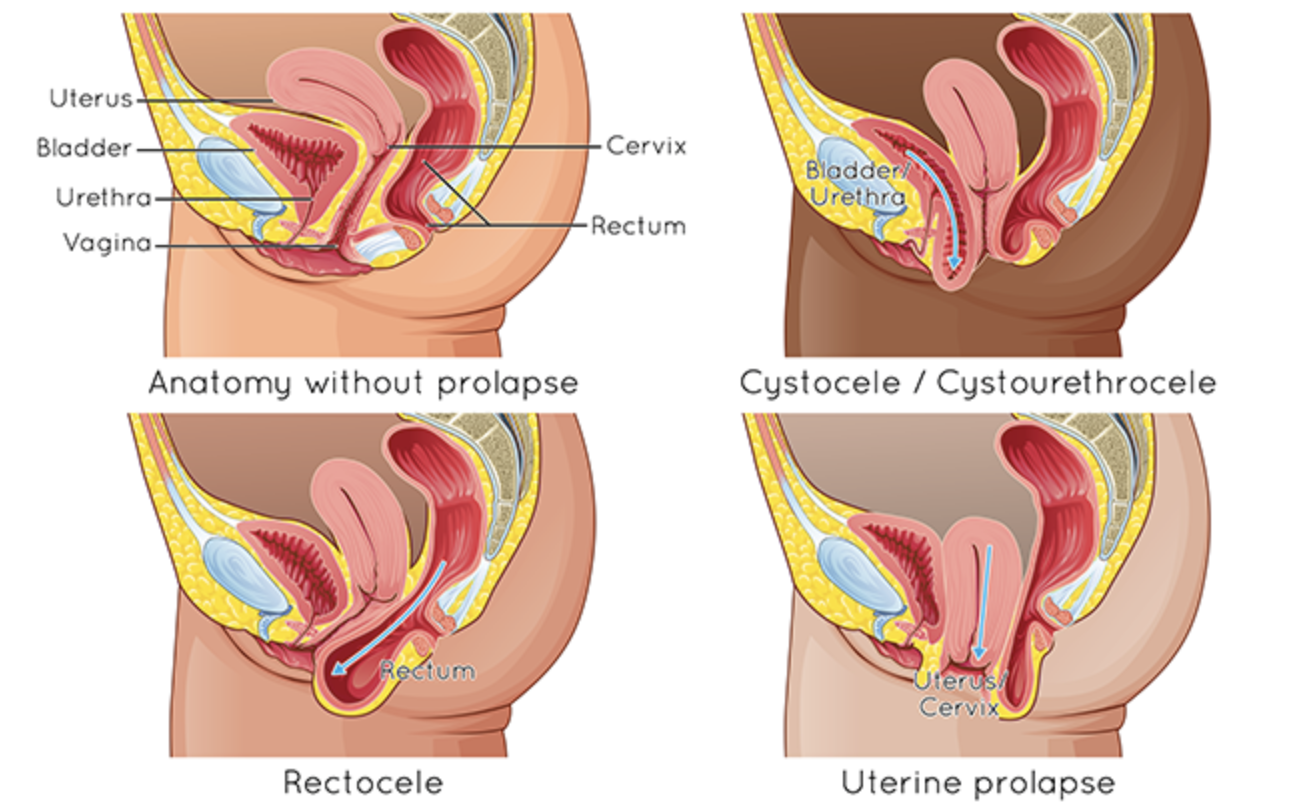When Support Systems Shift: Understanding Pelvic Organ Prolapse
Pelvic organ prolapse (POP) – a condition where one or more pelvic organs descend from their optimal position – affects approximately 50% of women who have given birth, with symptomatic cases increasing during perimenopause and beyond. Despite this prevalence, prolapse remains underrecognized and poorly understood, often causing unnecessary anxiety when discovered. Understanding this common condition empowers women to seek appropriate care while maintaining perspective about treatment options and prognosis. The pelvic organs maintain their position through an integrated support system combining muscular, ligamentous and connective tissue structures. This system includes the pelvic floor muscles, fascia, and ligaments that work together to support the bladder, uterus, and rectum. When these supportive elements weaken—due to factors like childbirth, chronic straining, hormonal changes, or even genetics—the organs can begin to shift downward, leading to what we term prolapse.
There are several types of pelvic organ prolapse, depending on which organ is involved:
Cystocele (bladder prolapse): The bladder bulges into the front wall of the vagina.
Rectocele (rectal prolapse): The rectum pushes into the back wall of the vagina.
Uterine prolapse: The uterus descends into or outside the vaginal canal.
Enterocele: The small bowel presses into the upper portion of the vagina.
Vaginal vault prolapse: This can occur after a hysterectomy, where the top of the vaginal canal loses support.
Symptoms vary widely from person to person. Some women may feel a heaviness or dragging sensation in the pelvis, a visible bulge at the vaginal opening, or discomfort with prolonged standing or physical activity. Others may experience bladder or bowel dysfunction—like urinary leakage, incomplete emptying, or constipation. Importantly, many women with prolapse experience little or no symptoms at all.
One of the most common concerns we hear in the clinic is, "Will this get worse?" While prolapse is progressive in some cases, it's not inevitable that it will worsen over time. With the right management strategies—especially when caught early—many women can maintain or even improve their symptoms without needing surgery.
So, what can be done?
This is where pelvic health physiotherapy comes in. At Women’s Health Physiotherapy Centre, we take a personalized approach to POP management. Physiotherapy aims to:
Strengthen the pelvic floor muscles through evidence-based exercises (like Kegels—done correctly!)
Address contributing factors such as posture, breathing patterns, and straining habits
Provide education on lifestyle adjustments to reduce pressure on the pelvic floor
Empower women with tools to manage symptoms and improve their quality of life
In some cases, we collaborate with GPs, gynecologists, or urogynecologists for a comprehensive approach. Pessaries—small devices worn inside the vagina to support the organs—can also be a helpful non-surgical option.
The takeaway?
Pelvic organ prolapse is common, manageable, and doesn’t always require surgery. If you’re concerned or curious about your symptoms, talking to a pelvic health physiotherapist is a proactive first step. Our goal is to help you feel informed, supported, and confident in your body.
If you’d like to book an appointment or learn more about how we can help, CLICK HERE for more.


